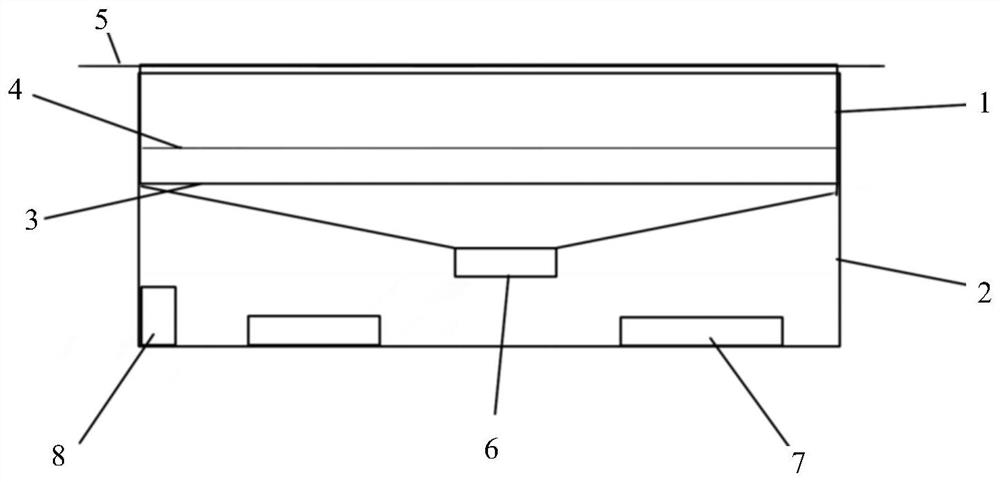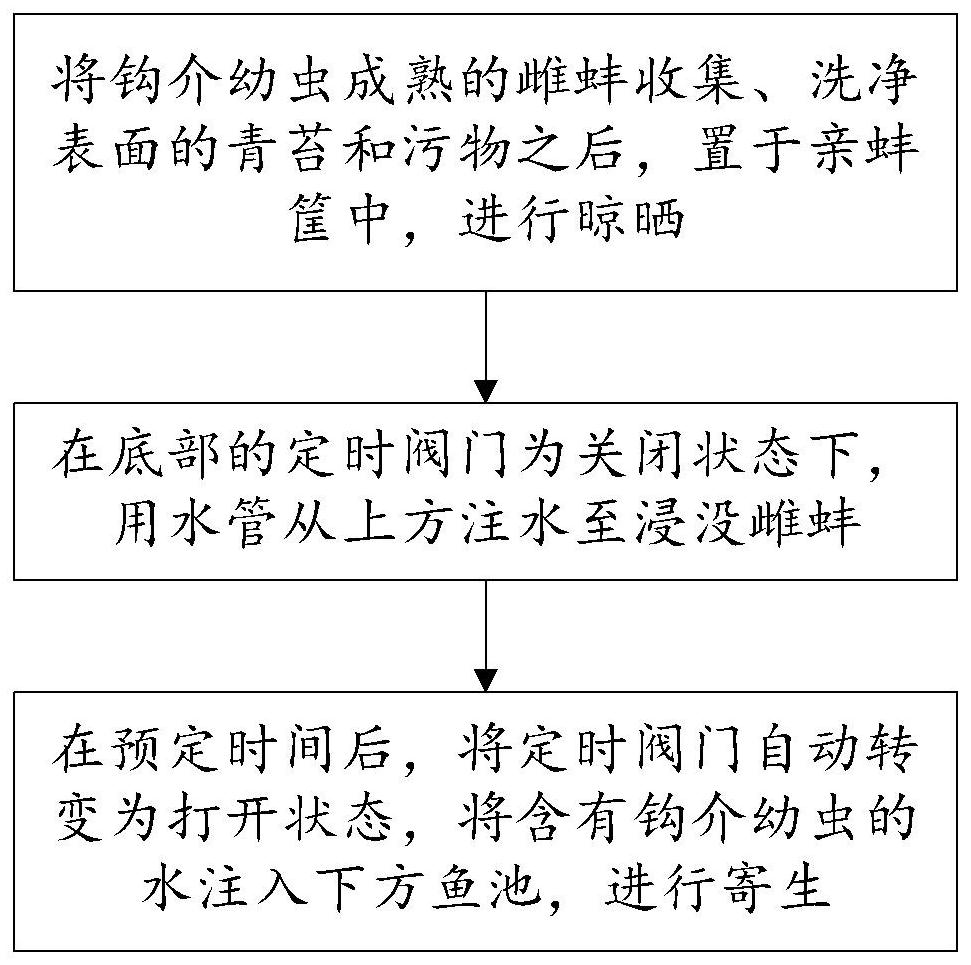Glochidium collecting and sending integrated sending pond and sending method
A technology for hooking larvae and fish ponds, which can be applied in the fields of climate change adaptation, fish farming, and applications, and can solve the problems of consuming a lot of manpower, material resources and time, many processes, and affecting breeding efficiency.
- Summary
- Abstract
- Description
- Claims
- Application Information
AI Technical Summary
Problems solved by technology
Method used
Image
Examples
Embodiment 1
[0024] The present invention provides an integrated seedling pond for collecting and sending seedlings of sclerotia larvae, which can be used for collecting and sending seedlings of sclerotia larvae, such as figure 1 As shown, the seedling pond includes: parent-child clam basket 1 and fish pond 2, parent-child clam basket 1 and fish pond 2 are detachably connected; the middle part of parent-child clam basket 1 is a net rope surface 4, the middle and lower part is a 60-mesh sieve silk surface 3, and the top two The sides are respectively provided with ears 5 that can be hung on the fish pond. The bottom of the clam basket 1 is four slopes that gather toward the center. The center of the bottom of the clam basket 1 is provided with a timing valve 6. The fish pond 2 is a cuboid container. The bottom is provided with small-sized pulsator 7 and the water outlet 8 that can allow host fish to lead to juvenile clam cultivation pond.
[0025] Concretely, in this scheme, the clam-loving...
Embodiment 2
[0035] The invention provides a method for collecting and sending seedlings of sclerotia larvae, which is used for collecting and sending seedlings of sclerotia larvae. Put it in the parent clam basket 1, and dry it; when the timing valve at the bottom is closed, pour water from above to submerge the female mussel; The water injected into the fish pond 2 below carries out parasitism.
[0036] Specifically, in this scheme, the female clam with mature larvae is placed in the clam basket 1 to collect the larvae, and the host fish is placed in the fish pond 2 for breeding. Before parasitism, the clam basket 1 and the fish pond 2 can be placed separately It can also be placed together in combination. When placed separately, when the parasitic process is carried out, the clam basket 1 and the fish pond 2 must be combined and placed together.
[0037]It is necessary to collect the mature female mussels of the larvae first, wash them one by one, clean the dirt and moss on the surface...
Embodiment 3
[0042] The present invention also provides an optional embodiment: the butterfly clam is selected to collect the larvae, and the yellow catfish is used as the host fish to send seedlings. The ratio of the number of the butterfly clam to the yellow catfish is about 3:10.
[0043] In the practical application of the present invention, it is only necessary to fill the basket with water two hours after the mussels are screened and put into the basket, and then the process is automatically completed, and the transfer of the yellow catfish only needs to be carried out after the parasitism is over; and This transfer does not need to be salvaged, and only needs to turn on the switch leading to the juvenile clam culture tank, and push the fish that have not swum into it. In this way, the gap in the middle can be used to screen the next batch of mussels, improving the efficiency of time utilization. Each worker can control multiple pools in turn. The ratio of mussels to fish is about 3...
PUM
 Login to View More
Login to View More Abstract
Description
Claims
Application Information
 Login to View More
Login to View More - R&D
- Intellectual Property
- Life Sciences
- Materials
- Tech Scout
- Unparalleled Data Quality
- Higher Quality Content
- 60% Fewer Hallucinations
Browse by: Latest US Patents, China's latest patents, Technical Efficacy Thesaurus, Application Domain, Technology Topic, Popular Technical Reports.
© 2025 PatSnap. All rights reserved.Legal|Privacy policy|Modern Slavery Act Transparency Statement|Sitemap|About US| Contact US: help@patsnap.com


